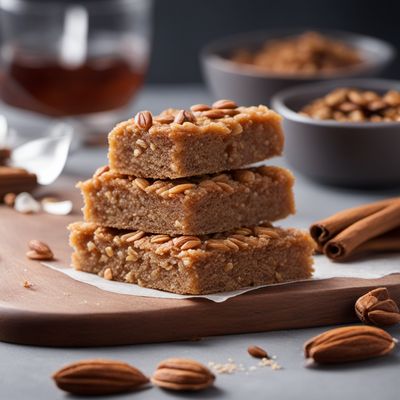
Dish
Pasteli
Pasteli is a popular candy in Greece, and is often served during special occasions, such as weddings or baptisms. It can also be found in many Greek bakeries and candy shops. While it is typically made with sesame seeds and honey, some variations use other types of nuts or dried fruit.
Origins and history
Pasteli has been a part of Greek cuisine for centuries, and is believed to have originated in the southern region of Peloponnese. It was originally made as a way to preserve sesame seeds and honey, which were both important ingredients in Greek cuisine. Today, pasteli is enjoyed by people all over Greece, and is a popular candy during the Christmas season.
Dietary considerations
Pasteli is not suitable for people with nut allergies or honey allergies. It is also high in calories and sugar, so it should be consumed in moderation.
Variations
There are many variations of pasteli, including versions that are made with almonds or pistachios. Some recipes also call for adding cinnamon or orange zest to the mixture for added flavor. In some regions of Greece, pasteli is made with grape molasses instead of honey.
Presentation and garnishing
Pasteli can be garnished with a sprinkle of sesame seeds or drizzled with chocolate for added sweetness. It can also be served with a side of fresh fruit or whipped cream for added flavor.
Tips & Tricks
To make pasteli extra crunchy, toast the sesame seeds before mixing them with the honey. You can also add a pinch of salt to the mixture for a savory twist.
Side-dishes
Pasteli can be served as a standalone snack or as a dessert. It can also be crumbled over yogurt or ice cream for added texture and flavor.
Drink pairings
Pasteli pairs well with a variety of drinks, including coffee, tea, or hot chocolate. It can also be served with a glass of sweet wine or liqueur for a more indulgent treat.
Delicious Pasteli recipes
More dishes from this category... Browse all »

A-gei
Taiwanese cuisine

Abará
Brazilian cuisine

Aburaage
Japanese cuisine

Acciughe sotto pesto
Italian cuisine

Accra
West African cuisine

Aggala
Indian cuisine

Airplane Olive
Greek cuisine

Alaisa fa'apopo
Samoan cuisine




